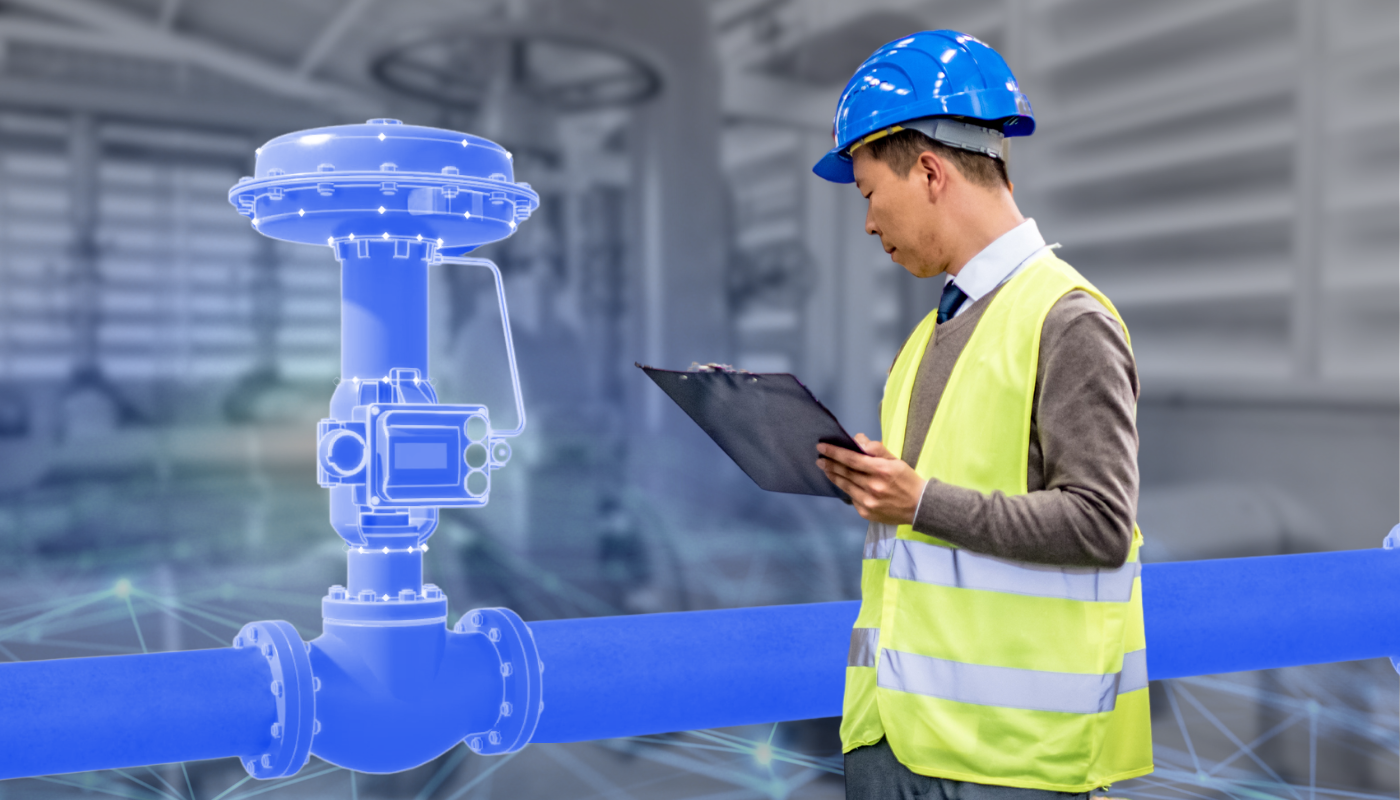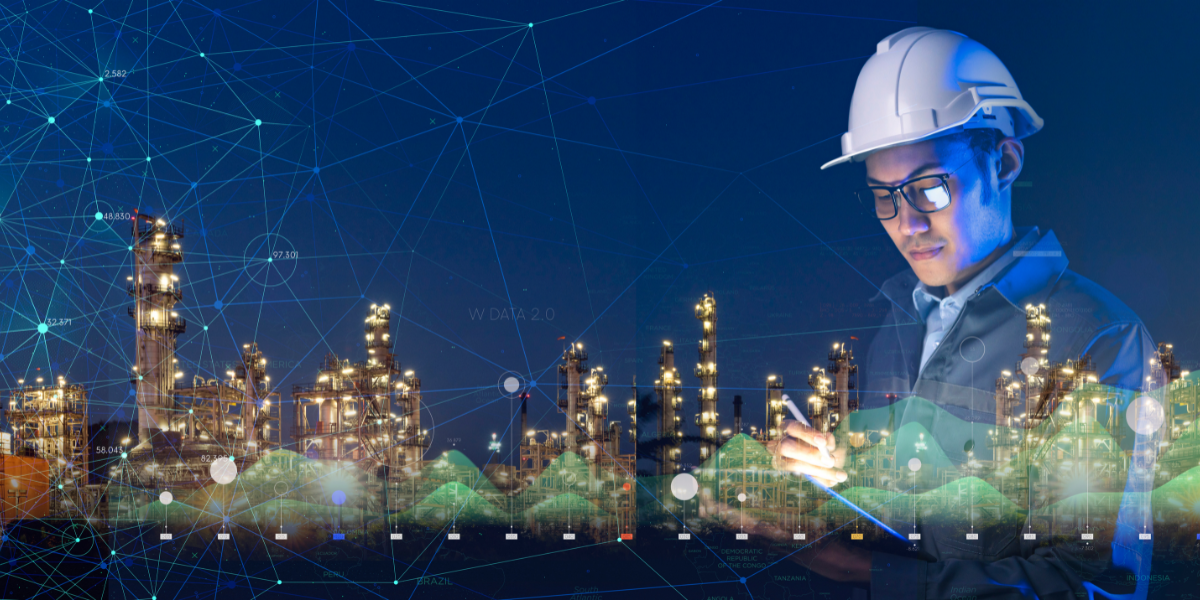From Concept to Reality: Demystifying Digital Twins in Manufacturing
In the rapidly evolving landscape of industrial and manufacturing technologies, the convergence of digital and physical systems has given rise to...

Industry 4.0 has revolutionized the way industries operate, bringing in a wave of technological advancements that have transformed conventional practices. A significant element in this industrial metamorphosis is asset condition monitoring, a critical component for any industry looking to enhance efficiency, reduce costs, and optimize performance.
This blog post delves into the realm of asset condition monitoring in the industrial and manufacturing sector, dissecting its methods, benefits, and its synergy with IoT, all under the overarching umbrella of Industry 4.0.

Asset condition monitoring refers to the process of continuously analyzing the condition of an asset to predict and prevent any potential failures. This is a proactive maintenance strategy, diverging from traditional reactive approaches. In the era of Industry 4.0, this monitoring is heavily reliant on the collection and analysis of data from various sensors and systems attached to the equipment.
The primary goal of asset condition monitoring is to identify changes in the performance or condition of a machine, indicating that maintenance or repair is required. This approach helps in avoiding unexpected equipment failures and extends the lifespan of assets.
In the dynamic landscape of industry 4.0, asset condition monitoring serves as a critical tool for maintaining the health and performance of machinery in industries. This proactive approach not only aids in preempting unscheduled breakdowns but also plays a vital role in reducing maintenance costs and minimizing repair schedules.
The integration of smart asset condition monitoring paves the way for optimized machine performance and substantially lowers the risk of failures. Predominantly, there are two primary methods employed in industries for effective asset condition monitoring:
Trend monitoring is a method that involves the continuous measurement and clarification of machine data for in-depth analysis. It provides a quantifiable indication of component failure and conducts a trend study of the machine's operational time.
This process is instrumental in specifying details about the asset's condition, particularly when deterioration surpasses a critical threshold. By tracking these trends over time, it becomes possible to predict and prevent potential failures before they escalate into more significant issues.
This method entails taking check measurements using acceptable indicators while the machine is operational. These measurements serve as a benchmark for the machine's condition at a specific time. Sudden breakdowns, material erosion, or performance losses, which could potentially lead to leakages and accidents, are identified through this process.
IoT condition monitoring plays a crucial role in this method, as it facilitates the regular detection and elimination of abnormalities, thereby preventing damage and ensuring consistent performance.
Both these methods, underpinned by advanced technologies such as IoT, provide a comprehensive and detailed understanding of the machine's condition. By leveraging these techniques, industries can achieve a more efficient, reliable, and safe operation of their assets, aligning perfectly with the objectives of Industry 4.0.
The integration of the Internet of Things (IoT) in condition-based monitoring is a game-changer. IoT enables real-time data collection and analysis, offering numerous benefits:
Predictive Maintenance: IoT facilitates the prediction of equipment failure before it occurs, allowing for timely maintenance and reducing downtime.
Cost Reduction: By predicting maintenance needs, IoT reduces the need for routine checks, cutting down maintenance costs.
Enhanced Safety: Real-time monitoring ensures any potential hazardous conditions are identified early, thereby improving workplace safety.
Data-Driven Decisions: IoT provides a wealth of data, enabling data-driven decision-making for better asset management.
Remote Monitoring: With IoT, assets can be monitored remotely, reducing the need for physical inspections and enabling centralized monitoring of multiple locations.
Data analytics plays a crucial role in asset condition monitoring. The data collected from various sensors and systems is analyzed to detect patterns and predict potential failures. Advanced analytics, including machine learning algorithms, can process vast amounts of data to provide insightful predictions and recommendations.
In an age where environmental concerns are paramount, efficient asset monitoring contributes significantly to sustainability. By optimizing the performance of equipment and preventing unnecessary energy use, industries can reduce their environmental footprint.
InCentrik is at the forefront of transforming industrial operations through cutting-edge asset condition monitoring solutions. Our expertise lies in harnessing the power of advanced analytics and real-time data to revolutionize how industries manage and monitor their assets. Here’s how our innovative solutions contribute to enhancing operational excellence:
At InCentrik, we understand the importance of staying ahead in a rapidly evolving industrial landscape. Our Remote Monitoring and Diagnostics (MD) solution embodies this by providing expert-designed solutions that streamline processes and optimize performance. We offer tailor-made remote diagnostics, backed by a dedicated team committed to constant innovation and proactive support.
Our HeatRate MD solution is specifically designed to maximize the efficiency of power generation plants. By combining advanced analytics with real-time dashboards, InCentrik enables you to elevate your power generation performance. This ensures not only cost-effectiveness but also adherence to sustainable practices, making it an ideal choice for industry leaders.
PI MD represents the pinnacle of harnessing infrastructure data. This system goes beyond mere monitoring of the health of your PI components; it enhances operational insights, ensuring quick problem resolution and optimal system performance in diverse environments.
Bearing MD is our specialized solution for monitoring and diagnosing bearing conditions. It integrates deep analytics to preemptively identify potential failures, enhancing the efficiency and reducing the maintenance costs of various equipment, thereby extending their lifespan.
Valve management is revolutionized with Valve MD. This tool offers detailed analytics and health monitoring for control valves, enabling proactive issue anticipation, functionality optimization, and superior control in operational processes.
Compression MD is designed to revolutionize how data is handled in the PI system. It focuses on optimizing PI system compression and exception settings, intelligently balancing data integrity, storage efficiency, and retrieval speeds. This system offers tailored solutions to fit the unique data landscape of each operation.
What You Need to Know About The Integrated Remote Operations Center (iROC) - Integrated Remote Operations Center 'iROC' are becoming popular as organizations seek ways to improve efficiency and costs. Here's what you need to know.
![]() Leading the digital transformation in the manufacturing industry. We bring our customers value through automation, integration, data management, and business intelligence. We bridge the gap between what really goes on in your plant and the decision-making power you hold as an executive.
Leading the digital transformation in the manufacturing industry. We bring our customers value through automation, integration, data management, and business intelligence. We bridge the gap between what really goes on in your plant and the decision-making power you hold as an executive.
At InCentrik we automate our customers process systems, manage our customer's data (from any data source), make data available to everyone, and we bring business intelligence to the data in order for our customers to work more efficiently. Checkout our Smart Apps including the Crisis Communication App, SmartHub and SmartHub Apps OEE, Shift, PI, Rounds, and Permits.

In the rapidly evolving landscape of industrial and manufacturing technologies, the convergence of digital and physical systems has given rise to...

This Cyber Monday, InCentrik is offering a FREE pair of HoloLens with any three SmartHub apps!

When we talk about the power generation industry, one of the paramount aspects that contribute to its efficiency and cost-effectiveness is the heat...